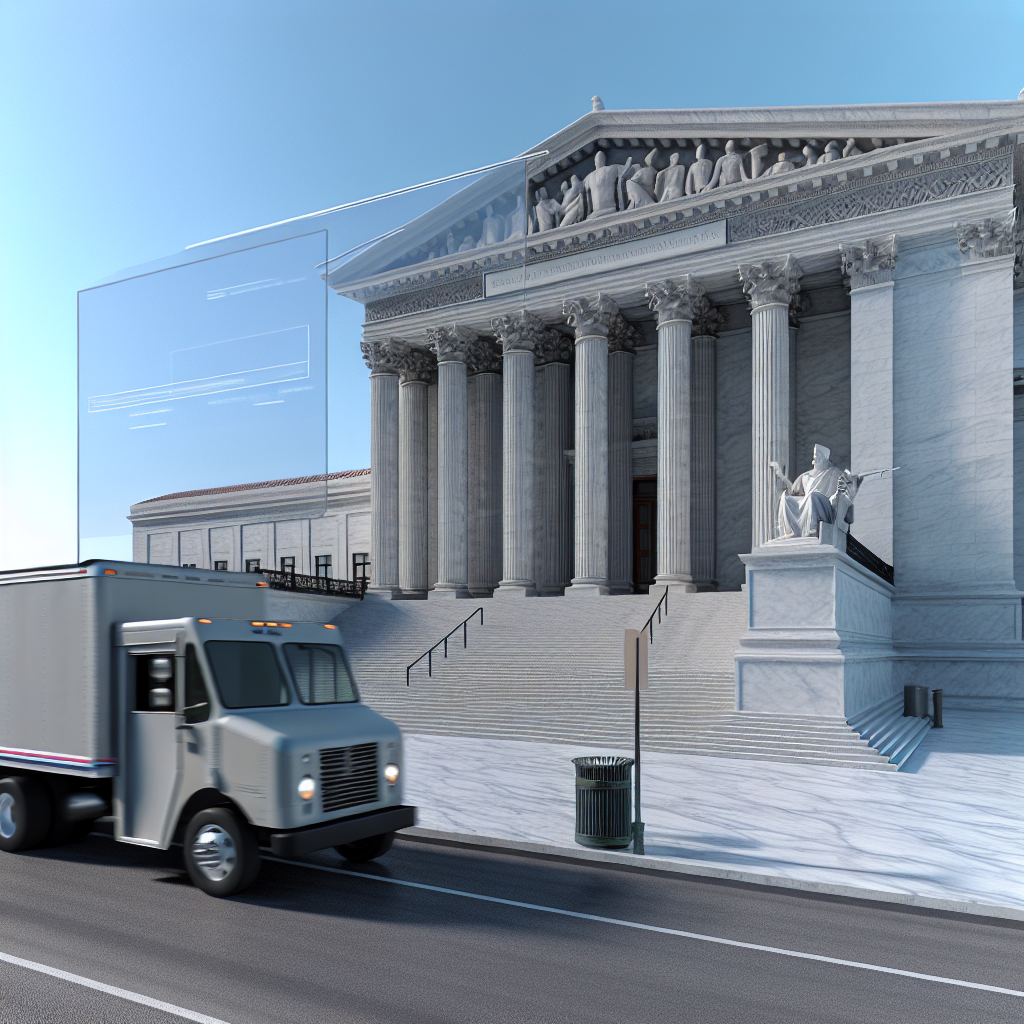The Supreme Court heard arguments today in a closely watched dispute over whether the U.S. Postal Service can be sued when employees allegedly refuse to deliver mail — a test that could recalibrate the government’s long‑standing shield from tort claims tied to mail handling. The case, United States Postal Service v. Konan, arrived at the high court after a lower court allowed a Texas landlord’s lawsuit to proceed, framing a stark question: does the Federal Tort Claims Act’s postal exception protect the government from liability only for accidental mail problems, or also for intentional nondelivery? The justices took the bench on Wednesday, Oct. 8, to consider that question.
For trucking and postal contractors that keep the nation’s surface network moving, the stakes are less about a single delivery dispute and more about what a narrower (or broader) immunity standard would do to risk, documentation and operating discipline across USPS’s ground lanes. If the Court says intentional nondelivery falls outside the postal exception, USPS could face more suits alleging purposeful withholding or mishandling — and that pressure typically rolls downhill in the form of tighter performance controls, stricter record‑keeping, and more rigorous verification from anyone touching the route, dock or dispatch scan. Those compliance ripples don’t stop at postal clerks; highway contract route providers and local transportation partners would likely see elevated audit, exception‑reporting and driver training requirements to help the agency defend itself.
Conversely, if the Court embraces a wider reading of the exception, shielding the Postal Service from suits even where plaintiffs allege deliberate nondelivery, carriers can expect fewer courtroom fights but not necessarily a lighter touch. USPS has been sharpening oversight of its surface network to lift reliability and contain cost; a ruling that preserves broad immunity would reinforce that operational emphasis while limiting new litigation vectors that might otherwise force policy rewrites mid‑peak. Either outcome raises practical questions for fleets that haul for the Postal Service: What proof will be needed at tender and handoff? How will USPS apportion responsibility when service breaks? And how much redundancy — scans, photos, telematics — will contractors be expected to provide to rebut claims that a package or letter was never carried in the first place?
Timing matters, too. The Court put Konan on the calendar alongside another election‑related case, Bost v. Illinois Board of Elections, underscoring how the first week of the October sitting leans heavily on mail‑and‑ballot questions. That means any signal from today’s argument about how the justices parse statutory text around mail handling will be read closely by shippers, carriers and state officials alike.
What to watch next for trucking: expect USPS to lean even harder on chain‑of‑custody evidence in ground operations. That could include more granular trip‑by‑trip attestations from contractors, tighter exception codes (e.g., weather, security hold, facility access), and escalation triggers when mail for a given address or P.O. box shows repeated anomalies. Shippers that inject volume into the USPS network — including consolidators and regional carriers using postal last‑mile — should prepare for more frequent data reconciliations and post‑incident reviews if the Court narrows immunity. If the Court goes the other way, the immediate legal risk may recede, but performance and visibility demands will still intensify as USPS pursues service and cost targets across its surface network.
Bottom line for carriers: this isn’t just a courtroom debate over two words in a statute. It’s a live question about how much legal exposure and verification burden will sit on the shoulders of the Postal Service and, by extension, the trucking partners that move its mail. Today’s argument makes clear that whatever the Court decides, documentation — not just on‑time performance — will be the currency of confidence on USPS lanes this peak season and beyond.
Sources: FreightWaves, C‑SPAN, The Guardian
This article was prepared exclusively for TruckStopInsider.com. Republishing is permitted only with proper credit and a link back to the original source.




